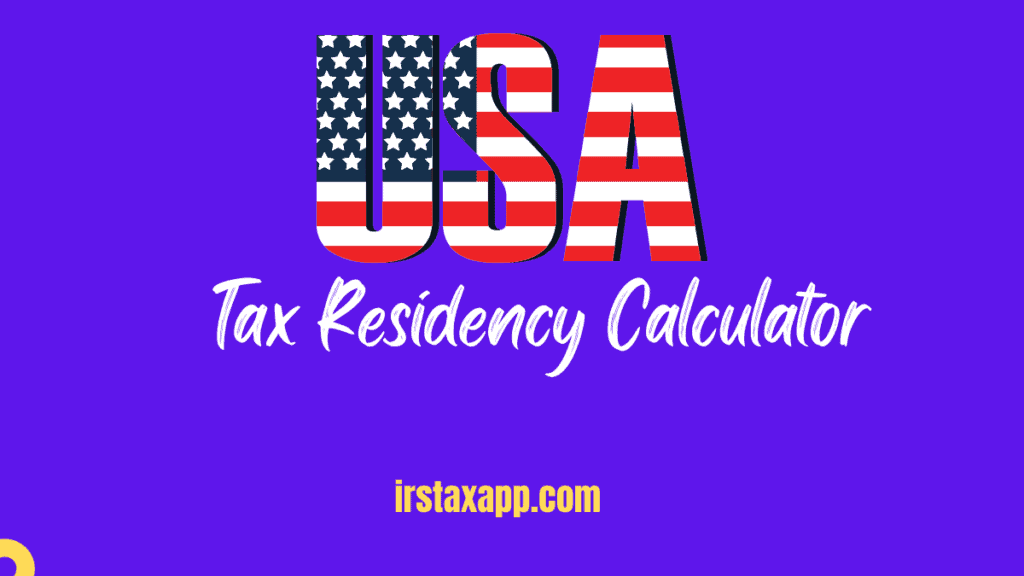
Tax residency is an important and fundamental criterion for the imposition of tax under the Internal Revenue Code. The reason is simple -tax is computed on taxable income, and the taxable income is based on the residential status of a person under the Internal Revenue Code. There are a number of tests the Substantial Presence Test or the Green Card holder test– that determine if you are a tax resident of the USA.
Table of Contents
IRC 7701 for determination of Tax Residency
In order to determine the residential status under Internal Revenue Code , one needs to consult section 7701 of the Internal Revenue Code (26 US Code ) which is as under:
(b) Definition of resident alien and nonresident alien
(1) In general For purposes of this title (other than subtitle B)—
(A) Resident alien An alien individual shall be treated as a resident of the United States with respect to any calendar year if (and only if) such individual meets the requirements of clause (i), (ii), or (iii):
(i) Lawfully admitted for permanent residence
Such individual is a lawful permanent resident of the United States at any time during such calendar year.(ii) Substantial presence test
Such individual meets the substantial presence test of paragraph (3).(iii) First year election
Such individual makes the election provided in paragraph (4).(B) Nonresident alien
An individual is a nonresident alien if such individual is neither a citizen of the United States nor a resident of the United States (within the meaning of subparagraph (A)).
Calculator for Finding Tax Residency Under US Law?
Seven ways you can be a tax resident of the USA
Here are seven ways a person can be treated as a tax resident of the USA. The most important thing to note is that this residency is only for tax purposes. It does not grant any benefit of being a citizen of the USA. So, barring point number one below, none of the ways will help you to acquire any citizenship or benefit of being a USA citizen.
7 ways to US tax residency
- If you are a U.S. citizen, then you are a tax resident for tax purposes even if you do not stay in the USA.
- You are admitted to the United States as, or change your status to, a lawful permanent resident under the immigration laws (the Green Card Test), or
- You pass the Substantial Presence Test.
- Opting for the “First-Year Choice” to be treated as a U.S. resident for at least part of the year of arrival,
- Your spouse is a U.S. citizen or U.S. resident, and you opt for U.S. residency.
- On the ground of close connection to a foreign country, or
- Taking the benefit of tax residency tie-breaker rules of an income tax treaty between that country and the United States.
What is the Green Card test?
A Green Card is issued to the family member of a lawful permanent resident of the USA by U.S. Citizenship and Immigration Services (USCIS) giving permanent residency rights by issuing a Permanent Resident Card, Form I-551, famously known as a “green card. So, anyone who has this card-Green Card – will automatically be treated as a tax resident of the USA for tax purposes.
What if a Green Card holder fails the Substantial Presence Test?
The rule is simple for such a situation. A Green Card holder is treated as a tax resident from the first date he/she puts his feet in the USA. So, for a particular year, the day he/she is present in the United States of America is the day from which he/she will be treated as a tax resident of the USA.
What is the Substantial Presence Test?
The substantial presence test basically counts the number of days the nonresident alien was present in the USA for three years and then applied a formula to compute the total number of days of presence.If he/she was present for 182 or more days in aggregate in those three years, he /she would be taken as a tax resident for tax purposes. I have explained the substantial presence test calculation along with a calculator in a separate post.
What is first-year choice?
The first-year choice is an option to treat a year as a tax resident year even if you did not pass the substantial presence test for the said year. For example, say you passed the substantial presence test for 2022 but failed for 2021. Under first-year choice, you can choose to be a tax resident from the year 2021 (even though you failed the test) if the following three conditions are met
- You passed the substantial presence test for 2022
- You were present in the USA for 31 days in the year 2021 and
- You were further present in the USA in the year 2021 for 75% of the remaining time ( counted from 1st day when 31 days started)
Then, you can choose the year 2021 as the year for tax residency. In order to make First Year Choice, you need to fill and attach a statement to the tax return Form 1040 by the due date. Read the detailed post on first-year choice


